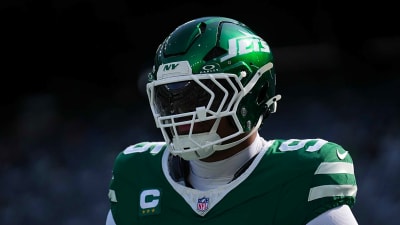
In recent policy changes, the PGA has begun an initiative to crack down on slow play. This comes in the wake of a 50,000-fan survey from last summer asking fans what they thought of slow play. It was later reaffirmed by PGA Tour’s chief marketing and communications officer Andy Weitz during Pebble Beach. What does that mean for the sport, and what are the solutions to help mitigate it?
What is Slow Play? And What is Public Opinion?
Slow play is just when a player takes too long to take their shots, either taking too long to align their shots or taking too many practice shots. It can also be caused by course conditions for anyone playing at home. Slow play has been a long-standing issue criticized by players and fans alike. It has also been called disrespectful to everyone’s time, especially when a tour can run up to 5 1/2 hours. It can be incredibly frustrating playing with a slow player in any sport, but not much has been done about it in golf. That is until this recent development.
Penalties for Slow Play (Rule 6-7)
- First Offense – Warning
- Second Offense – One (1) Stroke Penalty
- Third Offense – Two (2) Stroke Penalty
- Fourth Offense – Disqualification
Slow Play in The Past
Historically the PGA has not been good at penalizing slow play. Since 1995 only three players have been penalized for slow play in a PGA Tour event. This is not to say that slow play doesn’t happen often, there are plenty of players who get accused of slow play.
- In 1995 during the Honda Classic, Glen Day was fined, and during the 2017 Zurich Miguel Carballo and Brian Campbell were both penalized one shot
- Patrick Cantlay has been accused by Matt Fitzpatrick in 2023, calling this behavior “a disgrace”
- Fans accused Xander Schauffele during the 2024 Genisis Invitational along with Cantlay again
- In 2012, Kevin Na was in the spotlight for slow play due to his routine in lining up his shot
Solutions for Slow Play
In the past, PGA has tried to address the issue through fines, but recently they have taken to penalizing players by adding strokes to their score. This penalty alone should get slow players moving faster, as the fourth offense can lead to disqualification. Now this one has been enforced in the past but only twice in the same event. There are also talks about having players implement devices like rangefinders. Some are talking about implementing a shot clock similar to what might be found in competitive chess. There will also be a reduction in course sizes starting in 2026.
Criticisms of the Solutions
Each solution does have its criticisms. Smaller courses mean fewer opportunities for shots and strategies. The shot clock can get complicated with how many players are on the field. Rangefinders are used by plenty of players today but are not exactly a solution to slow play. The main criticism is that it benefits “wayward hitters”, but it won’t hurt.
What it means for Fans and Players
This move is garnering a lot of support from fans and players alike. For players, it means that the playtime for each tour will be cut down significantly. It will also mean that each tour is just a little less tiring for them, especially during the warmer months. It’s unsure by how much, but it won’t be anything to sneeze at. For fans, it means that viewing a tour will be much more palatable and digestible, and less frustrating waiting on that one player to align their shot.
This move will be an overall improvement to the sport even if the playtime is only cut down by thirty minutes.
More must-reads:
- Clemson HC Dabo Swinney fumes over college football officiating, calls for 'accountability'
- Kevin Durant, Draymond Green argue over Warriors' titles, and they're both right
- The 'World Series MVPs' quiz
Breaking News
Trending News
Customize Your Newsletter
 +
+
Get the latest news and rumors, customized to your favorite sports and teams. Emailed daily. Always free!








